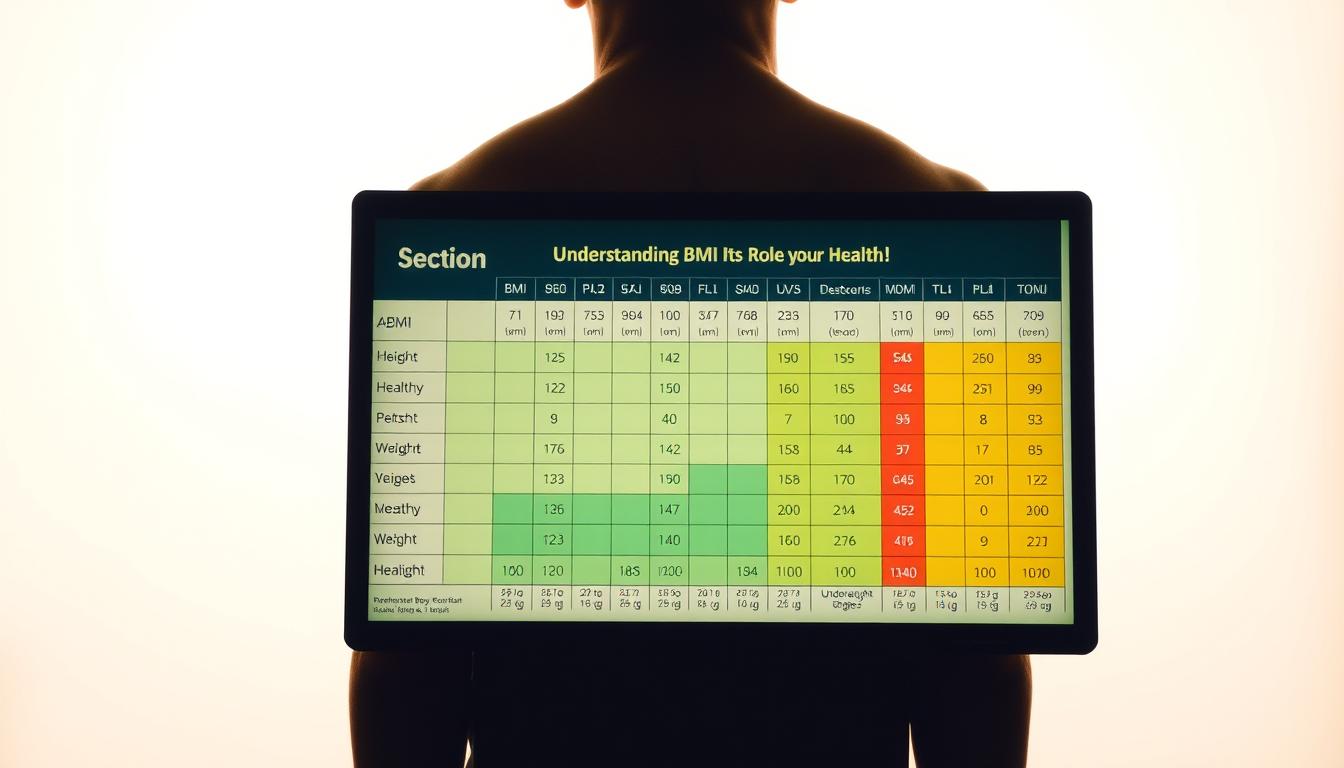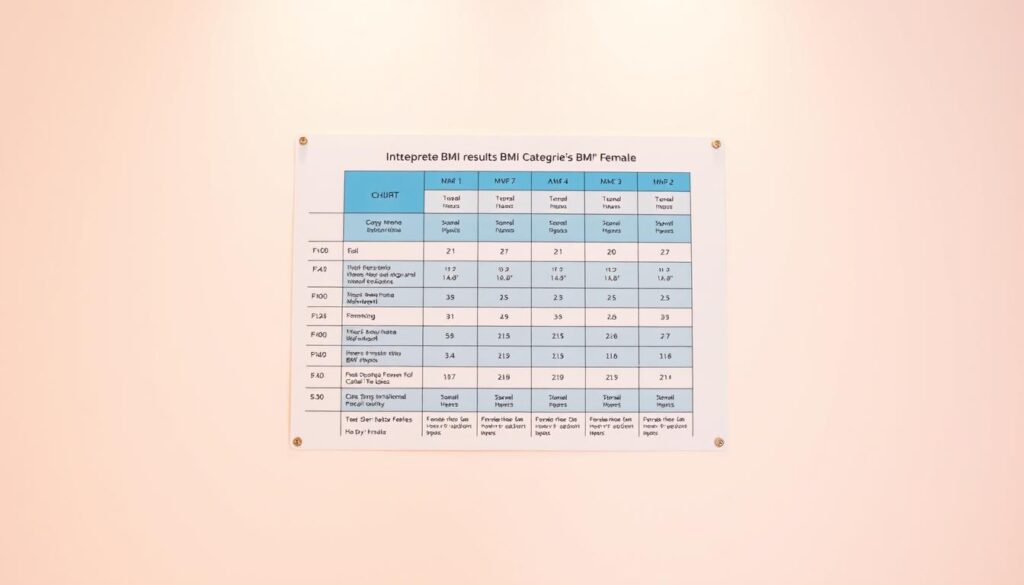Have you ever wondered why two women with identical heights can have vastly different health profiles? For adult women standing 5’7″, understanding body composition isn’t just about numbers—it’s about unlocking insights into long-term wellness. This guide focuses on the specific metrics and lifestyle factors that shape a healthy weight range for this height group.
The Body Mass Index (BMI) serves as a starting point for evaluating health risks, according to the CDC and American Cancer Society. While it doesn’t measure body fat directly, it correlates with potential issues like heart disease or metabolic imbalances. For a woman of 5’7″, this calculation becomes a practical tool to gauge whether weight aligns with medical recommendations.
We’ll break down how to calculate your BMI accurately and interpret results using trusted guidelines. You’ll also discover actionable strategies—from nutrition tweaks to activity adjustments—that help maintain an optimal range. Our data-backed approach ensures you’re equipped with reliable methods rather than fleeting trends.
Key Takeaways
- BMI provides a screening baseline for 5’7″ women but should be paired with other health assessments.
- Optimal weight ranges vary based on muscle mass, age, and bone density.
- The CDC categorizes BMI into four tiers: underweight, healthy, overweight, and obese.
- Lifestyle changes impact BMI more sustainably than short-term diets.
- Regular monitoring helps track progress and prevent chronic conditions.
Understanding BMI and Its Role in Health
Body mass index (BMI) might seem like a simple number, but its implications are vast. This metric compares weight to height squared, offering a snapshot of potential health risks. For women, it serves as an initial screening tool—not a final diagnosis—to identify trends in body composition.
What Is Body Mass Index?
The formula divides weight (in pounds) by height (in inches squared), multiplied by 703. For example, a 150-pound woman at 67 inches tall would calculate:
Online tools like a BMI calculator simplify this math. While it doesn’t measure fat directly, studies from the National Institutes of Health show higher BMI often correlates with increased body fat percentages.
Strengths and Gaps in Health Evaluation
Medical professionals use mass index values to assess risks for diabetes or hypertension. However, muscle density and bone structure can skew results. Athletes, for instance, may show high BMI despite low fat levels.
| Method | Process | Accuracy |
|---|---|---|
| Manual Calculation | Uses weight/height formula | Moderate |
| Online Calculator | Automates computation | High |
| Professional Tools | Includes skinfold tests | Highest |
The CDC acknowledges BMI’s limitations in distinguishing fat from muscle. As one NIH report states: “No single metric fully captures metabolic health.” Pairing BMI with waist measurements or blood tests provides a clearer picture.
Calculating bmi for 5 7 female
Accurate health assessments start with precise measurements. For women measuring 5’7″, determining body composition begins with two essential numbers: weight and height. Let’s explore two reliable methods to calculate this metric effectively.
Step-by-Step Manual Calculation
Grab a calculator and follow this formula endorsed by the CDC: multiply your weight in pounds by 703, then divide by your height in inches squared. A 150-pound woman at 67 inches tall would compute:
- 150 (lbs) × 703 = 105,450
- 67 × 67 = 4,489
- 105,450 ÷ 4,489 ≈ 23.5
Use a digital scale and stand straight against a wall for height accuracy. Morning measurements often yield the most consistent results.
Using an Online BMI Calculator
Reputable tools from organizations like the National Institutes of Health simplify this math. Enter your weight and height—the system handles conversions and equations instantly. Many platforms also store historical data, making trend analysis effortless.
Regular checks help adults identify shifts that might signal health risks. Research shows those with elevated scores face higher chances of developing diabetes or heart issues. Pairing this metric with waist circumference creates a clearer picture of metabolic wellness.
Women maintaining a healthy weight through balanced nutrition and activity often see stable results over time. Annual recalculations allow timely adjustments before minor changes become significant challenges.
Interpreting Your BMI Results
BMI results act as signposts, not destinations, in understanding health status. Clinical guidelines categorize scores into four ranges, each signaling different wellness considerations.
Understanding Health Risk Categories
The CDC defines standard ranges:
- Under 18.5: May indicate nutritional deficiencies or elevated fracture risks
- 18.5–24.9: Correlates with lower chances of heart disease and diabetes
- 25–29.9: Suggests potential for weight loss to reduce joint strain
- 30+: Requires evaluation for obesity-related conditions
When Numbers Don’t Tell the Full Story
Active individuals often receive misleading classifications. A body composition analysis reveals why: dense muscle weighs more than fat. Olympic sprinters, for instance, frequently land in “overweight” ranges despite minimal body fat.
| Assessment Method | Strengths | Weaknesses |
|---|---|---|
| BMI Calculation | Quick screening | Ignores waist size |
| Body Fat Percentage | Measures fat vs. muscle | Requires special equipment |
| Waist-to-Hip Ratio | Identifies abdominal fat | Doesn’t assess overall weight |
Medical groups recommend combining multiple metrics. The American Cancer Society notes that “a person’s waist measurement better predicts cancer risk than BMI alone.” Always discuss results with healthcare providers to create personalized plans.
Lifestyle Tips for Maintaining a Healthy BMI
Sustainable health habits form the foundation of long-term wellness, especially when tailored to individual needs. Small daily choices significantly influence body composition and disease prevention over time.
Fueling Your Body Strategically
Balanced nutrition plays a crucial role in managing pounds effectively. The CDC recommends filling half your plate with vegetables and fruits at meals. Swap sugary drinks for water or herbal teas to reduce empty calories.
Regular physical activity complements smart eating. Aim for 150 minutes of moderate exercise weekly—brisk walking counts! Strength training twice weekly helps maintain muscle mass, which burns more calories than fat tissue.
| Strategy | Weekly Goal | Health Benefit |
|---|---|---|
| Cardio Exercise | 150 minutes | Heart disease prevention |
| Strength Training | 2 sessions | Muscle preservation |
| Sleep Quality | 7-9 hours nightly | Hormone balance |
Tracking Progress Effectively
Regular monitoring helps identify trends before they become problematic. Use a tracking tool to record pounds and measurements monthly. Smart scales that calculate body fat percentage offer deeper insights than basic weight alone.
Three key factors influence success:
- Consistent meal timing
- Varied physical activities
- Stress management techniques
For families, involve children in meal preparation to establish healthy habits early. Research shows households cooking together reduce obesity risks by 26% compared to those relying on processed foods.
Conclusion
Making informed health decisions requires understanding key metrics and their real-world applications. For women measuring 5’7″, body composition analysis starts with calculating mass index values but extends far beyond basic numbers. Manual math or digital tools provide initial insights, though results demand careful interpretation—muscle density and waist measurements often refine the narrative.
Practical strategies like balanced nutrition and consistent activity prove vital for long-term wellness. These habits reduce risks of heart-related problems and metabolic imbalances highlighted by organizations like the CDC. Regular check-ups over years help track progress, while updated information ensures methods align with current medical guidelines.
This content emphasizes a holistic approach: combine numerical data with lifestyle adjustments. Compare metrics in a table format for clarity, but prioritize personalized health plans over generic classifications. Trusted sources like the American Cancer Society reinforce that no single type of assessment tells the full story.
Stay proactive by scheduling annual evaluations and exploring credible resources. Small, consistent changes today create lasting benefits—empowering you to navigate health problems with confidence and precision.




